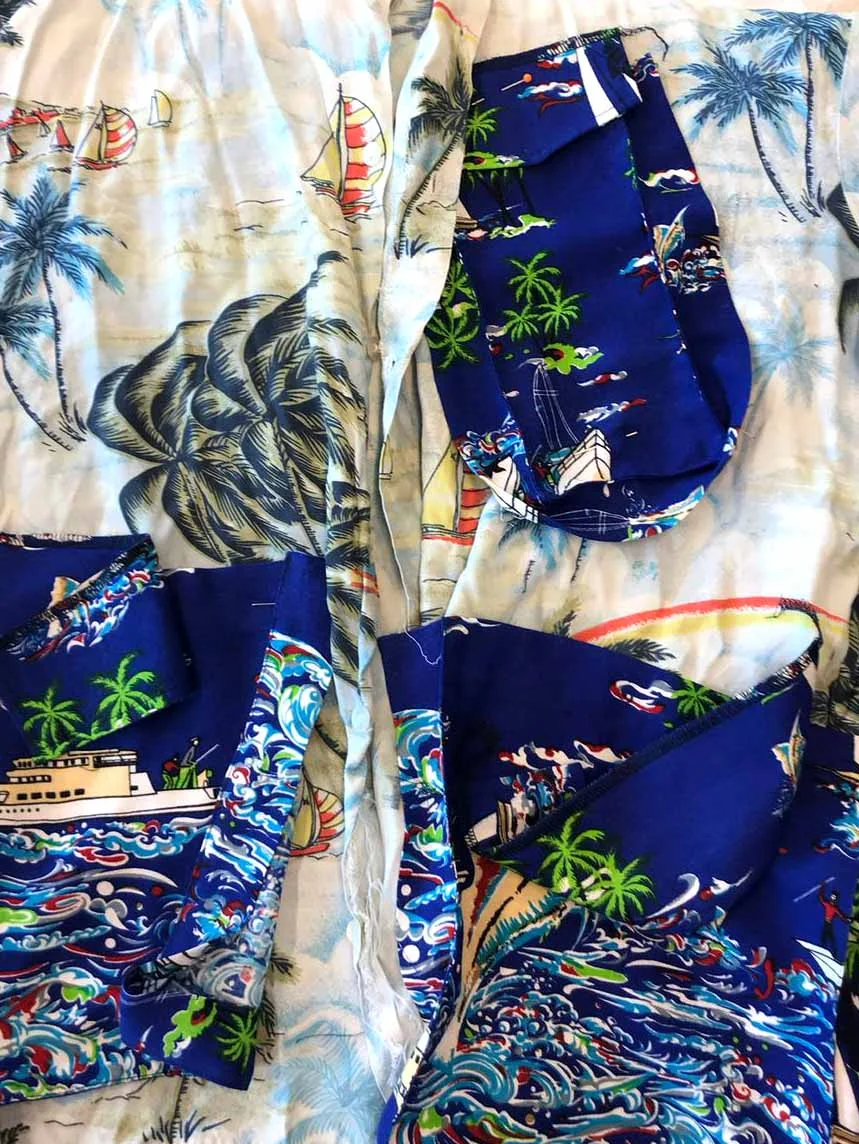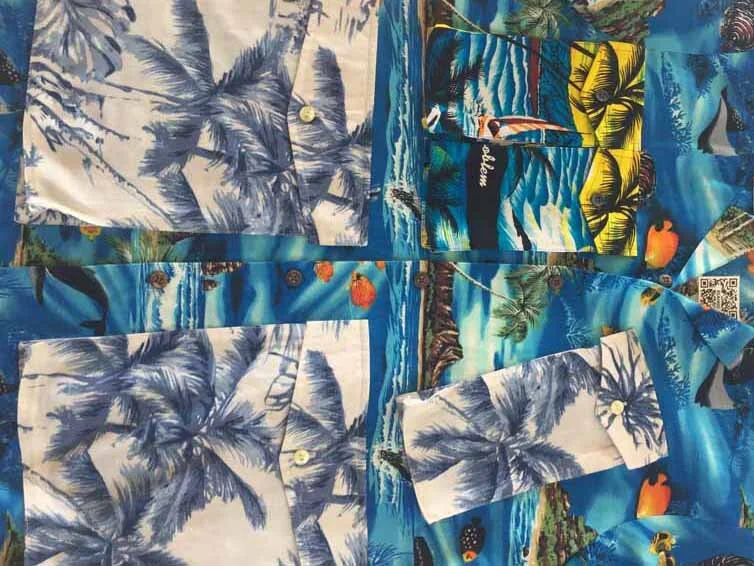MYAR SS20COLLECTION / RE_ALOHA / PRESENTS
REAH00
VINTAGE HAWAIIAN SHIRT - 2000’S
PRESENT
Vintage Hawaiian shirt with field jacket pocket applied with other vintage Hawaiian shirts.
The aloha shirt will be allover and will have all similar tones to the base. Base can vary from blue, green, red, black, khaki, yellow tone.
Mixed material
PAST
The Aloha shirt, commonly referred to as a Hawaiian shirt, is a style of dress shirt originating in Hawaii.
The dress shirts are printed, mostly short-sleeved, and collared. They usually have buttons, sometimes for the entire length of the dress shirt and sometimes just down to the chest (pullover). Aloha dress shirts usually have a left chest pocket sewn in, often with attention to ensure the printed pattern remains continuous. Aloha shirts may be worn by men or women; women's Aloha shirts usually have a lower-cut,v-neck style. The lower hem is straight since the shirts are not meant to be tucked in.
Aloha shirts exported to the mainland United States and elsewhere are called Hawaiian shirts, and are often brilliantly colored with floral patterns or generic Polynesian motifs. They are worn as casual, informal wear.
Traditional men's Aloha shirts, manufactured for local Hawaiian residents, are usually adorned with traditional Hawaiian quilt designs, tapa designs, and simple floral patterns in more muted colors. Contemporary Aloha shirts may have prints that do not feature any traditional Hawaiian quilt or floral designs but instead may incorporate drinks, palm trees, surf boards or other island tropical elements arranged in the same pattern as a traditional Aloha shirt.
Aloha shirts manufactured for local use are considered formal wear in business and government and are thus regarded as equivalent to a shirt, coat, and tie (generally impractical in the warmer climate of Hawaii) in all but the most formal of settings.
MAKING OF
MYAR commitment is to bring back to life past used military garments that have been stocked for long time in darkened warehouse, bringing back the light in the present time, for a second life in a civil environment.
The up-cycling process involving MYAR is not only an aesthetic intervention but also a process of historical knowledge
On each garment is applied a QR code that, once scanned, will tell the historical origin of the piece and the type of workmanship that has been made.
This process of customization is also witnessed by a small white cloth sachet containing scraps of fabrics: a part of the past of this garment, which has been modified from the original to be worn today for the future coming.
MYAR a modern view of the past

















